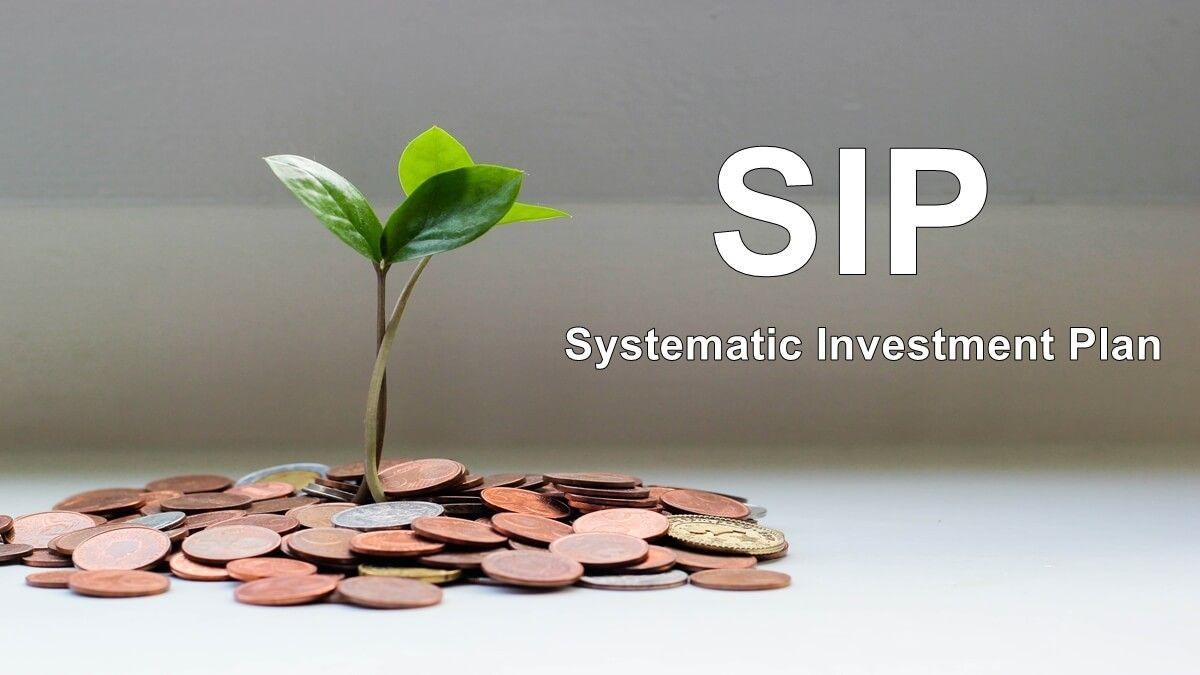Introduction
Raising a child comes with countless responsibilities, and one of the most significant is preparing for their financial future. With rising education costs, uncertain job markets, and inflation, many parents wonder: How early should you start investing for your child’s future? The answer is simple—the earlier, the better. Early investment not only provides a financial cushion but also leverages the power of compounding, making even small contributions grow significantly over time.
In this comprehensive guide, we’ll explore the ideal time to start investing, the best investment options for your child’s future, and strategies that can ensure a secure and prosperous path ahead. Whether you’re planning for education, marriage, or general financial security, understanding when and how to invest is key to long-term success.
Key Takeaways
- Start investing for your child as early as possible—ideally at birth.
- Use a mix of safe and high-return instruments (PPF + SIPs).
- Set clear financial goals and use online calculators.
- Leverage tax benefits under Section 80C.
- Avoid common mistakes like delaying or underestimating costs.
- Review and rebalance your portfolio annually.
- A well-planned investment ensures your child’s future is secure, no matter what life brings.
Why Investing Early Matters
The Power of Compounding
Compounding interest is one of the most powerful tools in personal finance. When you invest early, your returns start earning returns themselves. The longer the time horizon, the greater the potential for growth. For instance, investing INR 5,000 a month starting when your child is born can potentially result in a corpus of over INR 25 lakhs by the time they turn 18 (assuming a 10% annual return).
Beating Inflation
Education costs are skyrocketing. What might cost INR 10 lakhs today could easily be INR 30 lakhs or more two decades from now. Early investment allows your funds to outpace inflation and maintain purchasing power.
Reduced Financial Stress
Parents who invest early enjoy more manageable monthly contributions and are less likely to depend on expensive education loans. This relieves financial stress when big expenses arrive.
Flexibility in Financial Planning
Starting early gives you the flexibility to choose long-term investment products with potentially higher returns and lower risk over time. You can also diversify better.
Best Investment Options for Your Child’s Future
Public Provident Fund (PPF)
- Long-term, government-backed savings scheme.
- Lock-in period of 15 years.
- Tax-free returns.
- Ideal for conservative investors.
Sukanya Samriddhi Yojana (For Girl Child)
- Government scheme specifically for girl children.
- High interest rate and tax benefits.
- Deposits can be made up to 15 years; maturity at 21 years.
Systematic Investment Plans (SIPs) in Mutual Funds
- Regular, disciplined investment.
- Potentially higher returns over the long term.
- Can be tailored to risk appetite and goals.
Equity Mutual Funds
- Suitable for long-term goals like higher education.
- Higher risk, but historically better returns.
Child Education Plans by Insurance Companies
- Offers a combination of insurance and investment.
- Lump-sum payout when the child reaches a certain age.
Fixed Deposits (FDs) and Recurring Deposits (RDs)
- Low-risk, predictable returns.
- Useful for short-term goals.
Unit Linked Insurance Plans (ULIPs)
- Mix of insurance and market-linked investment.
- Long-term growth potential with life cover.
How Much Should You Invest
This depends on your future goals. A simple rule of thumb is to calculate the expected cost of your child’s higher education or wedding in future value terms and work backwards.
For example:
- Expected cost in 18 years: INR 30 lakhs
- Average annual return: 10%
- Required monthly investment: Approx. INR 5,000
Online child investment calculators can help determine the exact amount based on inflation, time frame, and expected return.
Tips for Smart Child Investment Planning
- Start as Early as Possible: The sooner you begin, the lesser you need to invest monthly.
- Set Clear Goals: Define the purpose—education, marriage, or both.
- Diversify: Use a mix of safe and growth-oriented instruments.
- Review Regularly: Monitor performance and rebalance your portfolio annually.
- Use Tax Benefits: Choose 80C-eligible plans to reduce taxable income.
- Avoid Dipping Into the Corpus: Maintain discipline and avoid premature withdrawals.
- Include Your Child Gradually: As they grow older, teach them the value of savings and investing.
Common Mistakes to Avoid
- Delaying investment until the child starts school.
- Relying solely on savings accounts with low interest.
- Ignoring inflation in future cost calculations.
- Choosing unsuitable plans without understanding risk.
- Not having a backup plan in case of financial emergencies.
Which Investment Plan Offers the Best Return for Your Child’s Education?

Description:
Compare popular child investment options like Mutual Funds, Sukanya Samriddhi Yojana, ULIPs, PPF, and Child ULIPs. Evaluate them based on return, safety, lock-in period, and flexibility. Include case studies showing different returns over 10, 15, and 20 years.
How to Build a ₹1 Crore Education Fund for Your Child?
Description:
Step-by-step breakdown of how much you need to save each month to reach a ₹1 crore goal by the time your child is 18. Show different scenarios with SIPs, equity mutual funds, and hybrid plans, factoring in inflation and tax benefits.
What Are the Safest Investment Options for Your Child’s Future in India
Description:
Focus on low-risk and government-backed schemes like PPF, Sukanya Samriddhi, Fixed Deposits, NSC, and child insurance policies. Ideal for conservative investors seeking capital preservation and moderate returns.
How Can SIPs Secure Your Child’s Higher Education Dreams
Description:
Explore the benefits of starting Systematic Investment Plans for children, including compounding, rupee cost averaging, goal-based investing, and liquidity. Include real-world SIP illustrations and fund selection strategies.
What Role Does Insurance Play in Securing Your Child’s Financial Future
Description:
Highlight why life insurance and child education plans are essential for risk coverage. Discuss term plans with child riders, ULIPs, and combination plans that offer lump-sum payouts in case of the parent’s untimely death.
Is It Better to Invest in Your Name or Your Child’s Name?
Description:
Compare tax benefits, legal implications, and ownership issues when investing under the parent’s name vs. the child’s name. Include scenarios for mutual funds, FDs, and PPF accounts.
How to Plan for Both Education and Marriage with One Investment Strategy?
Description:
Guide to creating a dual-goal investment plan. Break down timeframes, split portfolios, choose suitable instruments for short-term vs. long-term goals, and explain how to rebalance based on life stages.
What Are the Tax Benefits of Investing for Your Child’s Future?
Description:
Explore deductions under Sections 80C, 10(10D), 10(11A), etc. Compare tax-saving investments like ELSS, PPF, SSY, and insurance premiums. Provide tips on how to legally minimize taxes while building a child corpus.
How Do You Choose the Right Child Education Plan from Insurance Companies?
Description:
Evaluate the top child plans from ICICI Prudential, HDFC Life, SBI Life, LIC, etc. Compare features like maturity benefits, premium waivers, fund options, claim settlement ratios, and charges.
What Investment Mistakes Should Parents Avoid While Planning for Their Child’s Future?
Description:
Discuss common pitfalls like starting late, choosing low-return options, ignoring inflation, not reviewing the plan, and not accounting for emergencies. Include expert advice and remedies for each mistake.
Can Investing Early Make Your Child a Millionaire by Age 25?
Description:
Explore real investment scenarios where small monthly SIPs started early can accumulate into ₹1 crore+ over 20–25 years. Highlight compound interest, time value of money, and the magic of disciplined investing.
How to Create a Step-by-Step Investment Roadmap for Your Child’s Life Milestones
Description:
Break down life stages (schooling, higher education, marriage, career start) and assign investment instruments to each phase. Include timeline-based investment buckets and withdrawal strategies.
Which Investment Apps Are Best for Parents Planning Their Child’s Future?
Description:
Review and compare top Indian investment apps (like Groww, Zerodha Coin, Kuvera, Paytm Money, ETMONEY) for features like goal-based planning, child-focused tools, SIP tracking, and educational resources.
What Is the Ideal Asset Allocation for Your Child’s Future Portfolio?
Description:
Explain how to balance equity, debt, and hybrid assets based on your child’s age and your risk appetite. Include model portfolios for conservative, balanced, and aggressive investors.
How Can Grandparents Contribute to a Child’s Investment Journey?

Description:
Explore tax-friendly ways for grandparents to invest in their grandchild’s name—through FDs, PPF, mutual funds, or Sukanya Samriddhi—and how it helps build intergenerational wealth.
How Does Inflation Impact Your Child’s Future Financial Goals?
Description:
Analyze the hidden danger of inflation eroding your savings over time. Compare real vs. nominal returns on various child investment options and suggest how to beat inflation with equity-linked tools.
Are Traditional Child Plans Still Relevant in 2025?
Description:
Evaluate traditional endowment-based child plans versus new-age flexible options like ULIPs or mutual fund SIPs. Analyze costs, returns, lock-ins, and flexibility in current financial markets.
How to Use Goal-Based Investing to Fund Your Child’s Dreams
Description:
Teach parents how to assign specific goals to each investment—college abroad, MBA, startup fund, wedding—and select appropriate instruments for each. Include calculators and risk assessment guides.
Can Gold Be a Reliable Investment for Your Child’s Marriage?
Description:
Explore digital gold, sovereign gold bonds (SGBs), gold ETFs, and physical gold as long-term tools for marriage planning. Include tax implications, safety, and liquidity comparisons.
What Are the Legal and Nomination Rules When Investing in a Child’s Name?
Description:
Guide parents through the legal aspects of opening accounts for minors, assigning nominees, transferring ownership, and tax treatment of gains. Ensure clarity around guardian rights and maturity rules.
What’s the Right Monthly Investment for Your Child’s Dream College Abroad?
Detailed Description:
With international tuition fees rising every year, this article breaks down how much Indian parents need to invest monthly to send their child to top universities abroad (like in the US, UK, Canada). Cover realistic cost breakdowns (tuition + living + travel), required corpus, inflation-adjusted projections, and how to achieve the target through SIPs, dollar-based investments, and education-specific mutual funds. Include expert commentary on managing currency risk and using foreign investment schemes (like LRS).
Should You Choose ULIPs or Mutual Funds for Your Child’s Future?
Detailed Description:
This comparison article guides parents through the pros and cons of Unit Linked Insurance Plans (ULIPs) vs. Mutual Funds. Break down key aspects like lock-in period, returns, charges, tax benefits, investment flexibility, and insurance cover. Use real case studies to show how each performs over 10, 15, and 20 years. Offer a decision matrix to help parents choose based on goals like education, marriage, or asset transfer.
How to Create a Child Investment Portfolio on a Low Income?
Detailed Description:
Not every parent can invest large amounts, but disciplined small investments can still build wealth. This article explains how parents earning ₹20,000–₹50,000 per month can still secure their child’s future. Explore affordable SIPs, RD + PPF combinations, micro-investment platforms, and government schemes like Sukanya Samriddhi and PPF. Include monthly budgeting tips, goal planning, and emergency fund advice to ensure financial balance.
How to Use SIPs to Build an ₹50 Lakh Corpus by the Time Your Child Turns 18?

Detailed Description:
An advanced planning guide for goal-based investing using SIPs (Systematic Investment Plans). Break down how to invest ₹3,000–₹10,000/month to reach ₹50 lakhs over 18 years. Use charts and projections at various return rates (8%, 10%, 12%). Include fund recommendations across large-cap, mid-cap, and hybrid mutual funds. Also, explain the importance of staying invested, rebalancing annually, and ignoring short-term volatility.
What Investment Strategy Should You Use If You Have Two or More Children?
Detailed Description:
Planning for multiple children involves complex financial juggling. This article guides parents through staggered investment strategies, parallel portfolios, and the importance of timeline-based allocation. Discuss how to allocate separate funds for each child, choose appropriate schemes based on their age difference, and avoid portfolio overlap. Include budgeting for simultaneous college years and how to prioritize based on immediate needs.
How to Align Your Retirement and Child’s Education Goals Without Sacrificing Either?
Detailed Description:
Parents often compromise on their retirement savings to fund their child’s future—this article explains why that’s risky and how to manage both goals simultaneously. Cover smart asset allocation, goal prioritization, SIP strategies, and dual-bucket planning. Include tax-saving options that benefit both goals and explain how insurance and emergency funds protect both ends of the financial spectrum.
What Are the Best Government Schemes for Child Investment in India (2025 Edition)?
Detailed Description:
A detailed roundup of all major government-backed schemes: PPF, Sukanya Samriddhi Yojana, National Savings Certificate (NSC), Senior Citizen Savings Scheme (for grandparents investing), and RBI Bonds. Compare their features, current interest rates, maturity terms, and tax treatment. Use updated 2025 figures and examples to show how to combine these schemes with market-based investments.
How to Prepare Financially for Your Child’s Future Medical Needs?
Detailed Description:
Most parents plan only for education or marriage, but medical emergencies can derail everything. This article guides parents on creating a child-focused health plan, critical illness cover, emergency funds, and medical riders in insurance policies. Include tips on medical inflation, child health investment apps, and when to consider child health insurance separately.
Can You Invest in Stocks for Your Minor Child Legally and Safely?
Detailed Description:
Explore the legal and procedural aspects of investing directly in the stock market for a minor child. Explain how to open a demat and trading account in the child’s name (with parent as guardian), how capital gains are taxed, and what risk controls should be in place. Recommend blue-chip, dividend-paying stocks for long-term holdings and explain the importance of monitoring and guidance.
How to Create a Financial Legacy for Your Child Using Trusts and Long-Term Investments
Detailed Description:
Go beyond traditional Investments—explain how HNIs and upper-middle-class parents can use tools like family trusts, inheritance planning, gold bonds, real estate, and dividend portfolios to build a generational wealth plan. Include a guide on creating will-based asset transfers, nominations, and using insurance-linked investment trusts to ensure financial continuity for children, even in the parent’s absence.
Also read : Are You Ready to Start Investing with Just a Small Amount?
Conclusion
Investing for your child’s future is one of the most rewarding financial goals you can set. Starting early not only reduces the burden on your finances later but also maximizes returns through the power of compounding. From traditional options like PPF to market-linked ones like mutual funds, today’s parents have a wide range of tools at their disposal. By planning ahead, staying disciplined, and reviewing periodically, you can ensure your child has the resources to achieve their dreams.
Remember, time is your biggest asset when it comes to investing. The earlier you begin, the greater the rewards.
FAQs
What is the best age to start investing for my child?
Ideally, as soon as your child is born. This gives you 15-20 years of compounding.
Which is better: PPF or Mutual Funds for children?
PPF is safer and offers tax-free returns, while mutual funds may offer higher returns with moderate risk. A combination works well.
How much should I invest monthly for my child’s education?
Depends on the estimated future cost. Use an investment calculator to determine the right amount.
Is Sukanya Samriddhi Yojana only for girl children?
Yes, it’s exclusively designed for girls under the age of 10.
Can I open a mutual fund in my child’s name?
Yes, many AMCs allow parents to open mutual fund accounts in the name of a minor.
What happens to child investment plans if I die?
Plans like ULIPs and child education insurance provide a death benefit to ensure the goal is still met.
How do I choose the best investment option for my child?
Assess your risk tolerance, financial goals, and investment horizon. A mix of equity and debt is usually advisable.


